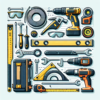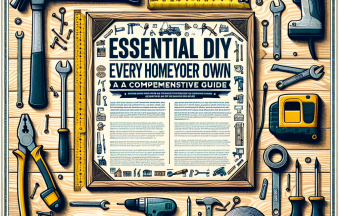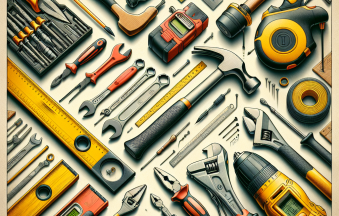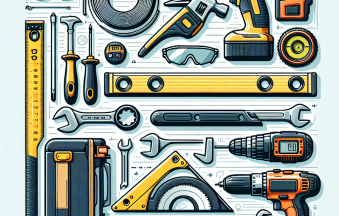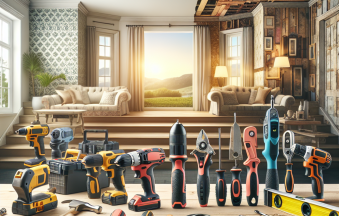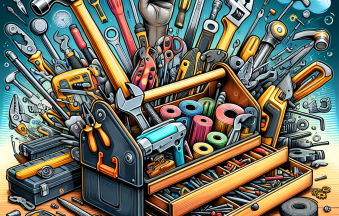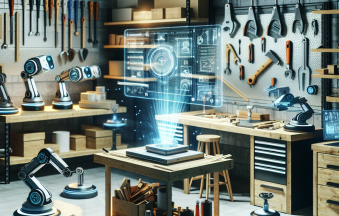Home Tools: Your Initial Step to DIY Triumph
When starting any DIY journey, the proper home tools are vital. This encompasses fundamental instruments like hammers, screwdrivers, and measuring tapes, which establish the core of your toolkit. Allocating resources towards a high-quality toolbox can also assist in preserving these tools organized and easily reachable.
If you’re a beginner, consider a multitool—a portable instrument that merges various functions such as pliers, knife, and screwdriver. This adaptability is perfect for managing minor tasks around the home. Furthermore, a reliable cordless drill is crucial for mounting shelves, assembling furniture, or any endeavor that involves screws. Ensure your drill is equipped with multiple bits and an extra battery to avoid unforeseen interruptions!
Building Materials: Key Elements for Any Task
No DIY endeavor is finished without the appropriate building materials. Whether you’re crafting a new furniture piece or executing repairs, a robust foundation starts with high-quality resources. Begin with plywood, 2x4s, and a variety of other types of lumber. These basics will support most home tasks.
Don’t overlook insulation materials if you’re undertaking home enhancements. They can significantly elevate energy efficiency. A high-quality adhesive—such as construction glue—can also influence the assembly of items.
Electrical: Powering Your Creations Securely
For any electrical tasks, it’s essential to emphasize safety. Begin with the fundamentals—a robust voltage tester to confirm circuits are live before commencing work. If you intend to install outlets or relocate wiring, a quality wire stripper is crucial for managing electrical cables.
When dealing with electric devices, always remember to turn off the main power supply. Additionally, wear shoes with rubber soles and maintain a dry workspace to further reduce hazards.
Hardware & Fixings: The Overlooked Champions
Hardware and fasteners hold your projects together, quite literally. A collection of various screws, nails, and anchors is vital for any DIY toolkit. When tackling larger tasks, consider heavy-duty fasteners such as lag bolts or toggle bolts for enhanced strength.
Don’t underestimate the significance of hinges, latches, and brackets, essential for cabinetry and furniture assembly. A well-equipped toolbox with fasteners ensures you won’t have to rush to the store during a project.
Kitchen & Bath: Tools for Practical Areas
Your kitchen and bathroom areas pose distinctive DIY hurdles. Crucial tools for these spaces include a reliable pipe wrench for plumbing tasks and a tile cutter for renovations. If you’re considering a kitchen makeover, investing in a cabinet jigsaw can enable precise cuts in confined spaces.
Concerning fixtures, a collection of fundamental plumbing components such as fittings and seals will assist in preventing leaks. Remember that adequate preparation is vital; always measure twice to guarantee your new installations fit flawlessly.
Light Bulbs & LEDs: Illuminating Your Area
Effective lighting can metamorphose any area. Grasping the difference between traditional light bulbs and LED bulbs can significantly influence your home’s atmosphere and energy efficiency. LED lights are generally more energy-saving and possess a longer lifespan, making them a budget-friendly choice.
For a DIY venture, consider substituting old bulbs or fitting new fixtures. Just ensure you utilize the appropriate wattage and type of light bulb for your fixtures—verify compatibility to avert flickering or damage.
Lighting & Fans: Boosting Functionality and Aesthetics
When enhancing your lighting fixtures or installing new fans, having a few vital tools will create a significant impact. A step ladder is necessary for reaching high-mounted ceiling fixtures, while a light fixture puller can ease changing out outdated bulbs.
Moreover, ceiling fans not only enhance air circulation in your dwelling but also add to its decor. Installing a fan can be a simple DIY endeavor with the appropriate tools, provided you adhere to local electrical regulations and ensure safety measures are enacted.
Measuring Instruments: Accuracy is Essential
Successful DIY projects frequently depend on accurate measurements. Invest in excellent measuring instruments like a tape measure, level, and a square. Having these readily available allows you to execute everything from installing shelves to laying tile with assurance.
A laser level can also be extremely beneficial for hanging artwork or installing cabinets, enabling you to achieve impeccably straight lines without the uncertainty that comes with traditional levels.
Paint & Wall Materials: The Final Touch
No DIY project is finished without the additional flair of paint! Begin with a durable roller, brushes, and a sturdy paint tray. Ensure you also have protective items like drop cloths and painter’s tape to protect floors and furnishings.
When choosing paint, consider the finish that will best suit your project—flat, eggshell, or glossy. Each type offers benefits based on the desired appearance and practicality. Additionally, take the time to prepare your walls properly to ensure optimal outcomes.





